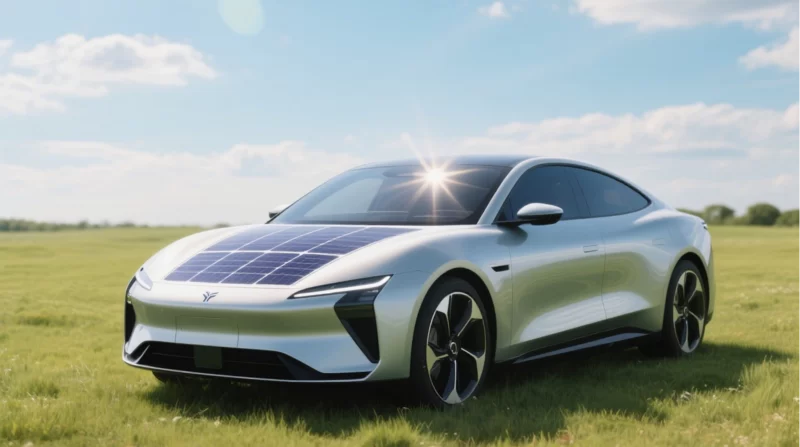Why Don’t We See Real Solar-Powered Cars on the Market Yet?

Recently, some people have been asking:
"It’s already 2025—why don’t we see real solar-powered cars on the market? Isn’t solar energy supposed to be clean and futuristic?"
Great question! While solar technology has made huge progress in recent years, the dream of a car fully powered by sunlight still isn’t practical—yet. Let’s break down why.
1. Too Little Power, Too Short a Distance
Take an average car roof—about 2 square meters. Even if you install high-efficiency solar panels, on a sunny day, it might only generate 2 to 3 kWh of electricity.
Now consider this:
A typical EV needs 12–15 kWh to drive just 100 kilometers.
So, after a full day in the sun, your car could go... maybe 10 to 15 km? And that’s if the weather’s perfect.
In other words: not nearly enough for daily use.
2. High Cost, Low Return
To make solar power work on a car, you need solar panels, inverters, control systems—all of which add significant cost. On top of that, they make the vehicle heavier and more complex.
The return? A few extra kilometers of range per day—not worth the extra thousands of dollars.
Most drivers would rather spend that money on a bigger battery or use public charging stations. It just makes more sense.
3. Technology Isn’t Fully There Yet
Even if you can add solar panels to a car, there are still a lot of issues:
Low efficiency: Standard solar panels only convert 15–22% of sunlight into electricity.
Unreliable sunlight: If your car is parked indoors or it’s cloudy, the panels don’t work.
Durability problems: Solar panels on cars must endure rain, heat, and wind—hard to maintain long-term.
So it’s not that automakers don’t want to go solar—it’s that the tech just isn’t ready yet.
4. Some Brands Are Already Testing the Waters
Even though mass-market solar cars aren’t here yet, some companies have tried to make it work:
Lightyear 0 (Netherlands): Solar-powered EV that can drive ~70km per day from sunlight alone—but costs $250,000+.
Toyota Prius Solar Edition: Uses solar power to run onboard systems or trickle-charge the battery—not for driving.
Some Chinese RVs and utility vehicles now use solar panels for lighting, AC, or communication equipment—but only as support.
Bottom line: Solar panels can help, but they’re not enough to fully power a car.
5. The Solar Car Dream Is Still on the Way
In the future, we might see breakthroughs like:
Ultra-efficient, flexible, lightweight solar panels
Lighter car frames and more aerodynamic design
Smarter energy management systems
Maybe in 5 to 10 years, solar-powered vehicles will become a real option for daily driving.
Final Thoughts
Solar-powered cars are a cool and promising idea. But for now, they’re still limited by current technology. Most electric vehicles today still rely on battery packs and charging stations, with solar playing only a minor, supportive role.
But the future is getting brighter—literally.
Who knows? Someday your rooftop, your house, and your car might all be part of the same smart, solar-powered ecosystem.
If you’re into solar energy, EV technology, or clean transportation, follow us for more updates—we break down complex tech into simple, everyday ideas.
